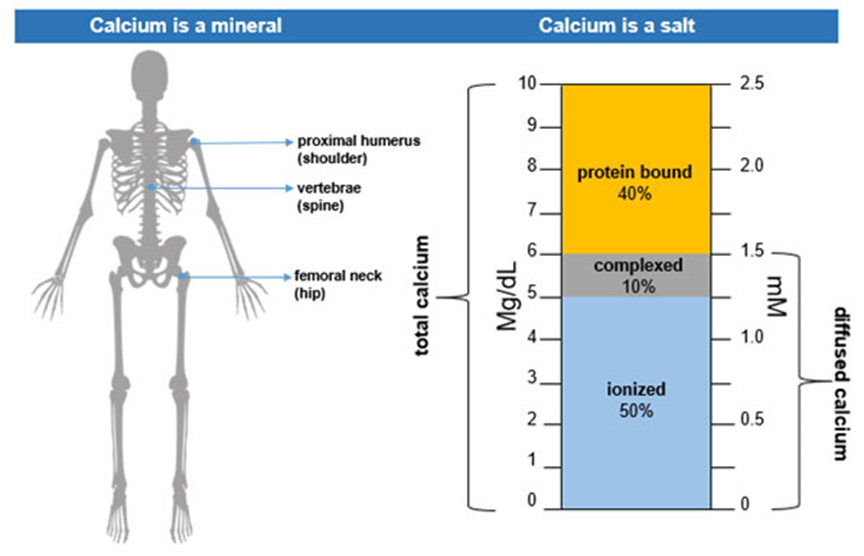What is the normal range of serum chloride level in adults?
95-110 mg/dL
10-120 mEq/L
96-106 mEq/L
1.8-2.6 mEq/L
The Correct Answer is C
Choice A reason: This is incorrect because 95-110 mg/dL is the normal range of serum phosphorus level in adults, not chloride. Phosphorus is an electrolyte that is involved in energy metabolism, acid-base balance, and bone formation.
Choice B reason: This is incorrect because 10-120 mEq/L is not a realistic range for any electrolyte level in the blood. The units of mEq/L indicate the concentration of ions, not the mass of the substance. The normal range of serum chloride level in adults is expressed in mEq/L, not mg/dL.
Choice C reason: This is correct because 96-106 mEq/L is the normal range of serum chloride level in adults. Chloride is an electrolyte that is important for fluid balance, acid-base balance, and nerve transmission.
Choice D reason: This is incorrect because 1.8-2.6 mEq/L is the normal range of serum magnesium level in adults, not chloride. Magnesium is an electrolyte that is important for muscle and nerve function, as well as enzyme activity.

Nursing Test Bank
Naxlex Comprehensive Predictor Exams
Related Questions
Correct Answer is D
Explanation
Choice A reason: Producing phosphate buffers is not the main function of the kidneys in response to acid-base disturbances. Phosphate buffers are mainly found in the intracellular fluid and the urine, where they help to maintain the pH by binding or releasing hydrogen ions.
Choice B reason: Adjusting PaCO2 levels is not the function of the kidneys, but rather the function of the lungs in response to acid-base disturbances. The lungs regulate the PaCO2 levels by increasing or decreasing the rate and depth of respiration, which affects the amount of carbon dioxide exhaled.
Choice C reason: Producing protein buffers is not the function of the kidneys, but rather the function of the cells and the plasma in response to acid-base disturbances. Protein buffers are the most abundant and versatile buffers in the body, as they can act as acids or bases by donating or accepting hydrogen ions.
Choice D reason: Excreting or reabsorbing hydrogen or bicarbonate is the main function of the kidneys in response to acid-base disturbances. The kidneys regulate the HCO3- levels by either reabsorbing it from the filtrate or generating it from carbon dioxide and water. The kidneys also regulate the hydrogen ion levels by either excreting it into the urine or exchanging it for sodium ions.
Correct Answer is C
Explanation
Choice A reason: This is a low value for serum calcium, which indicates hypocalcemia. Hypocalcemia can cause muscle spasms, tetany, seizures, and cardiac arrhythmias.
Choice B reason: This is also a low value for serum calcium, which indicates hypocalcemia. Hypocalcemia can cause muscle spasms, tetany, seizures, and cardiac arrhythmias.
Choice C reason: This is the normal range of serum calcium in adults. Calcium is essential for bone health, muscle contraction, nerve transmission, and blood clotting.
Choice D reason: This is a high value for serum calcium, which indicates hypercalcemia. Hypercalcemia can cause nausea, vomiting, constipation, confusion, lethargy, and kidney stones.

Whether you are a student looking to ace your exams or a practicing nurse seeking to enhance your expertise , our nursing education contents will empower you with the confidence and competence to make a difference in the lives of patients and become a respected leader in the healthcare field.
Visit Naxlex, invest in your future and unlock endless possibilities with our unparalleled nursing education contents today
Report Wrong Answer on the Current Question
Do you disagree with the answer? If yes, what is your expected answer? Explain.
Kindly be descriptive with the issue you are facing.
